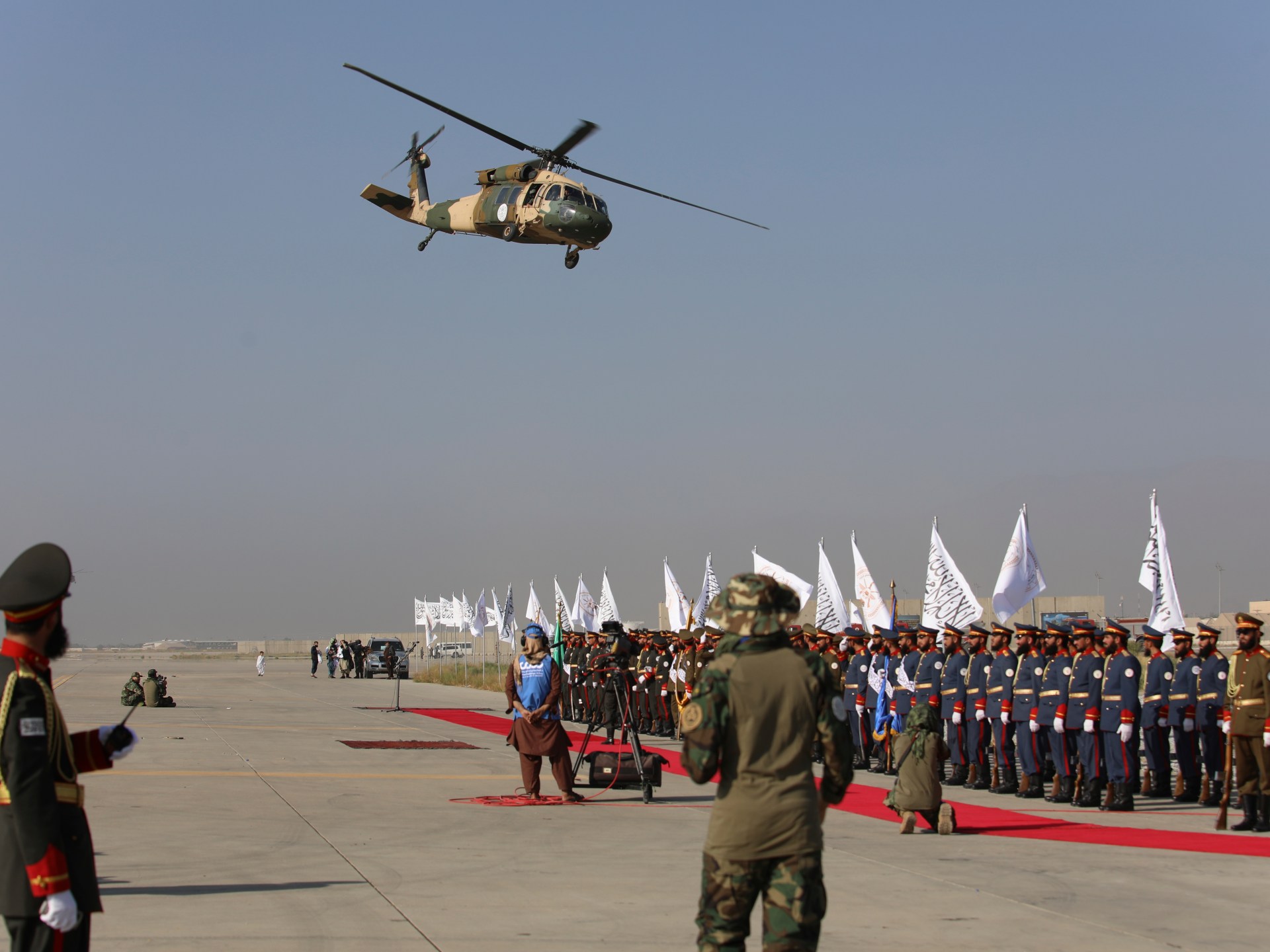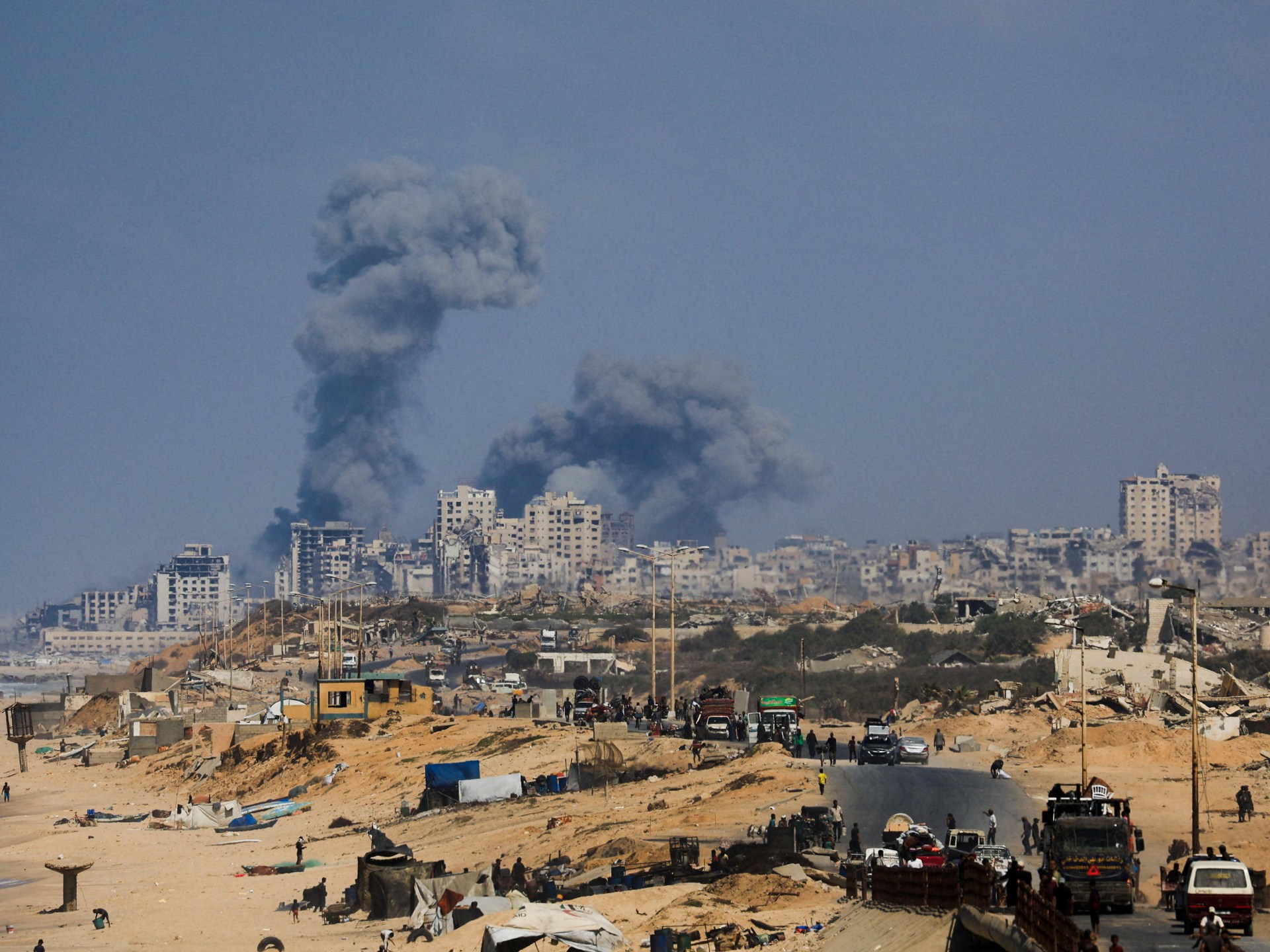United States President Donald Trump has demanded that Afghanistan’s ruling Taliban hand the country’s Bagram airbase over to Washington, five years after he signed a deal with the group that paved the way for the US withdrawal from Kabul.
At a news conference with United Kingdom Prime Minister Keir Starmer on September 18, Trump told reporters that the US government was “trying to get [Bagram] back”.
“We gave it to [the Taliban] for nothing. We want that base back,” he said.
Two days later, on September 20, he followed up that demand with a pointed threat on his Truth Social platform: “If Afghanistan doesn’t give Bagram Airbase back to those that built it, the United States of America, BAD THINGS ARE GOING TO HAPPEN!!!”
The Taliban has rejected Trump’s demand.
This is not the first time, however, that Trump has shown his interest in retaking the former US military base. In a February 2025 media briefing, now deleted from the White House’s website, Trump was quoted as saying, “We were going to keep Bagram. We were going to keep a small force on Bagram.”
So what is the Bagram base, why does Trump want it so badly, what is its strategic significance, and can the US get it back?
What is the Bagram airbase?
Four years after US forces evacuated their military bases in Afghanistan, Bagram remains a contentious piece of real estate that the Trump administration wants to retake from the Taliban.
The base, which has two concrete runways – one 3.6km long (2.2 miles), the other 3km (1.9 miles) – lies about 50km (31 miles) outside Afghanistan’s capital, Kabul. It has been a strategic stronghold for the many military powers that have controlled Afghanistan – and fought over it – over the past half-century.
The airfield was first developed by the Soviet Union in the 1950s, an early shot fired at the dawn of the Cold War that would drag Afghanistan into its vortex for decades. But the Afghan government of the time controlled the base.
That changed after the Soviet Union invaded Afghanistan in 1979 — its troops stayed in charge of the base for a decade, before Moscow withdrew from the country.
In 1991, the Soviet-backed government of Mohammad Najibullah lost control of Bagram to the Northern Alliance, one of the most influential opposition groups fighting for power. But the Northern Alliance would itself lose control of the base to the Taliban.
After the NATO invasion of Afghanistan in 2001, the base then became a strategic centrepiece of the US military’s presence in the country, used as a special command for various military divisions, steadily growing in size, capacity and utility.
At its peak in 2009, the base could host about 10,000 people. While US forces controlled the base, it was shared with other NATO members, including units from the UK’s Royal Marines.
Aside from military units, the base hosted a large prison that became notorious for abuse and torture of Afghan detainees by US forces and their local partners. Bagram was also home to a fully functioning hospital, housing barracks for thousands of soldiers, and several US chain restaurants, like Pizza Hut and Subway.
The base and facilities were evacuated, with much of the weapons and equipment destroyed, by US forces during the withdrawal of August 2021. What remained was looted by local groups before the Taliban seized control.
Why does Trump want the Bagram base back?
Trump has frequently complained about how the US left major weapons behind in its hasty evacuation in 2021, in effect handing them over to the Taliban and other armed groups in Afghanistan.
But experts say that the real appeal of Bagram lies not in the largely wrecked military equipment there, nor in the abandoned chain restaurants on the complex.
There is the symbolic value of showcasing US control over a base built by a geopolitical rival. “It has always been of important strategic value, since it was built by the Soviet Union,” said Ibraheem Bahiss, senior analyst at Crisis Group.
The rugged, mountainous terrain of Afghanistan makes controlling its airspace difficult, with few places suitable for landing large military planes and weapons carriers. Bagram – the country’s largest airbase – offers rare respite.
The Bagram base played a “crucial role” in Washington’s so-called “war on terror” after 2001, said Hekmatullah Azamy, security analyst with the Centre for Conflict and Peace Studies (CAPS), a think tank with headquarters in Kabul.
Major air missions took off from Bagram, including ones that led to civilian killings, such as the 2015 bombing of a hospital run by Doctors Without Borders, known by its French initials MSF, in Kunduz, in which 42 people were killed and at least 30 were injured.
The US commander in Afghanistan repeatedly changed his narrative on what prompted the bombing, before eventually acknowledging it was a mistake. Then US-President Barack Obama apologised.
But even though the US has now left Afghanistan, Bagram’s value has only increased, Azamy said, with the rise of Chinese influence in the region.
“As the priorities shifted, and the US started viewing China as the number one threat, this base is seemingly important once again, primarily because of its proximity to China and the significance it has,” he said.
Bagram is about 800km (about 500 miles) from the Chinese border, and about 2,400km (about 1,500 miles) from the nearest Chinese missile factory in Xinjiang.
Trump has also referred to China as a key reason for wanting to retake control of Bagram, saying this month in London that the base is “an hour away from where [China] makes its nuclear weapons”. Back in February, Trump also claimed that the base was “exactly one hour away from where China makes its nuclear missiles”.
Chinese officials, on their part, have pushed back. “Afghanistan’s future should be decided by its own people. Stirring up tension and creating confrontation in the region won’t be popular,” Chinese Ministry of Foreign Affairs spokesperson Lin Jian said after Trump’s comments alongside UK Prime Minister Keir Starmer.
Can the US retake Bagram?
This is questionable, say experts.
“In theory, Bagram is a strategic base for the US in terms of projecting power into the region,” said Ashley Jackson, co-director at the Geneva-headquartered Centre on Armed Groups. She pointed out, however, that “the move would seem to be in direct contradiction to the US policy of ending the military mission in Afghanistan”.
“The sheer logistics of negotiating redeployment and handing back would be extremely challenging and lengthy, and it’s not clear that this would serve either side’s strategic interests,” Jackson added.
Both Azamy and Bahiss believe the Taliban, too, have no incentive to want to give up Bagram.
Such a move would “crush the Taliban’s legitimacy,” Azamy said.
Bahiss said the group “would be unwilling to accept a foreign footprint on Afghanistan, including at Bagram airbase”.
The Taliban movement was built in large part on the idea of fighting foreign occupation and influence, Kabul-based Bahiss pointed out. The group has often argued that “as long as foreign troops hold even one metre of soil, jihad or holy war is an obligation”.
“Any negotiations with a foreign military would shatter their strength and risk their own members deserting the movement in large droves,” Bahiss said.
How has the Taliban responded?
Indeed, the Taliban, on their part, have been very clear, and have repeatedly rejected Trump’s demands. On September 21, the group cited the 2020 agreement that Trump’s administration signed with the Taliban in Doha.
“It should be recalled that, under the Doha Agreement, the US pledged that ‘it will not use or threaten force against the territorial integrity or political independence of Afghanistan, nor interfere in its internal affairs,” Hamdullah Fitrat, deputy spokesperson of the Taliban, said on social media.
“The US needs to remain faithful to its commitments.”
Fitrat’s comments followed Trump’s threat of “bad things” happening to Afghanistan if the Taliban did not hand Bagram over.
What is the US game plan?
The Taliban’s refusal to negotiate over the base has not deterred Trump, so far, and analysts believe the US might be using the Bagram demand as a bargaining chip.
It could be “a means of demanding something grand, like Bagram, and settling for something smaller and more symbolic down the road, [like] the return of some weapons and equipment, which the president has talked about previously,” Jackson of the Centre on Armed Groups said.
A 2022 assessment by the then-US Department of Defense, now the Department of War, found that more than $7bn worth of weapons had been abandoned in Afghanistan, much of which is now believed to be in the Taliban’s control.
And if the Bagram demand is a gambit in a larger negotiation, that might be good news for the Taliban, too, say analysts. Afghanistan’s rulers have been seeking wider international legitimacy, and talks with the US are a step towards that.
“In some ways, the Trump administration is [saying that it is] open to the idea of engagement with the Taliban,” Kabul-based Bahiss said, pointing to other examples of the US president showing a willingness to build ties with leaders Washington has previously treated as enemies: from Ahmed al-Sharaa in Syria to Vladimir Putin in Russia and Kim Jong Un in North Korea.
But ultimately, Bahiss said, Trump’s desire to do business with the Taliban will also depend on what is on the table for him.
“What can the Taliban offer? Is it going to be private investment, minerals, or military assets like Bagram?” asked Bahiss.




